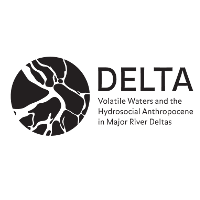We often hear that something is “unnatural” – unnatural history, unnatural behaviour, unnatural food, unnatural selection, unnatural death, and the list goes on. Even the corona crisis has recently been called an “unnatural” disaster by some, including Mary Mostafanezhad. At the same time, Bill Adams has outlined what the same crisis can teach us about nature, since it triggered after all, by a virus, a “natural” pathogen. The crisis can be understood as both, a reminder that nature is not simply a benign and picturesque whole, and an illustration that even basic biological processes like disease are socially and politically shaped phenomena.
This essay asks the questions: What does it mean to call something unnatural? And what does it do? It is a chapter in a collection on “Interdisciplinary approaches to culture theory” that grew out of a very productive Centre of Excellence in Cultural Theory (2008-2015) in Estonia. While the book brings together a diverse range of approaches to cultural theory, always co-authered by researchers from different disciplines, this essay’s authors come from anthropology, geography, psychology, and religious studies.
The chapter illustrates how the unnatural is an immensely powerful, if inherently ambiguous, concept with critical implications for the formation of social categories, the morality of classifications, the terms of urban governance and the directions of environmental conflicts. What people consider unnatural is a question of framing, strategising, and the significance of the respective categorical boundaries; its meaning emerges through on-going and often conflicting ecologies of practice.
It argues that thinking about the unnatural can be seen as an opportunity to explicitly expand cultural theory beyond a focus on describing and explaining unnatural (human, constructed, imagined, symbolic) phenomena, and towards an exploration of the material-semiotic processes that produce the unnatural and the powerful efficacy of the concept.
The essay lays out various dimensions of the unnatural in six excursions that take the reader through (1) its implications in the academic division of labour; (2) the making and maintaining of categorical boundaries; (3) theories of hybrids and monsters; (4) articulations of the unnatural in urban ruins; (5) the unnatural in urban planning for former summer house cooperatives in Estonia; and (6) the role of the unnatural in assigning or foregoing responsibility for environmental change.
The chapter concludes that the unnatural should be approached as a label that functions as a means for policing boundaries, articulating claims and positioning humans vis-à-vis each other and in relation to the wider world. It is followed by a thoughtful commentary by environmental semiotician Timo Maran.
The text is published open access, and available for download here.

